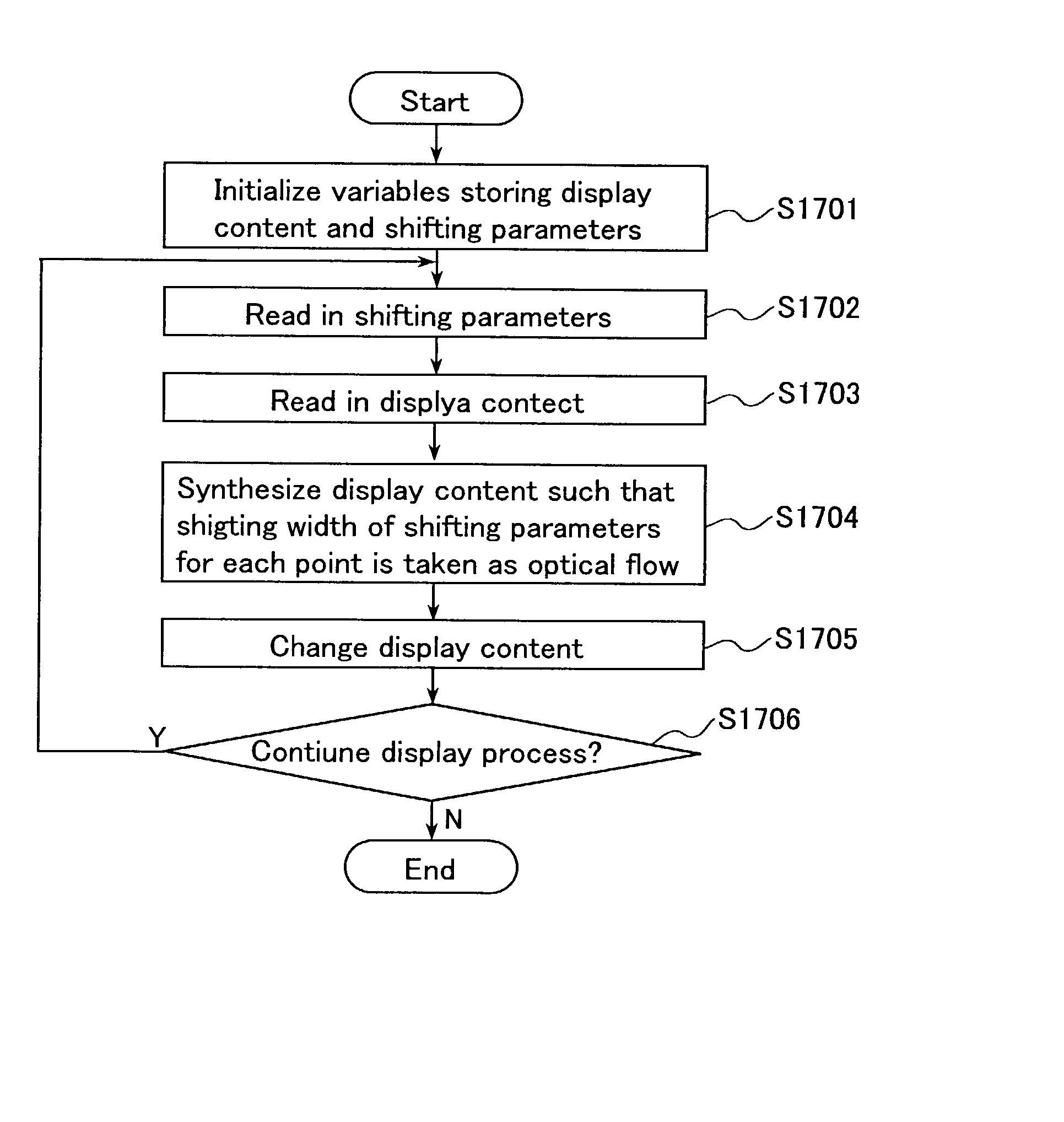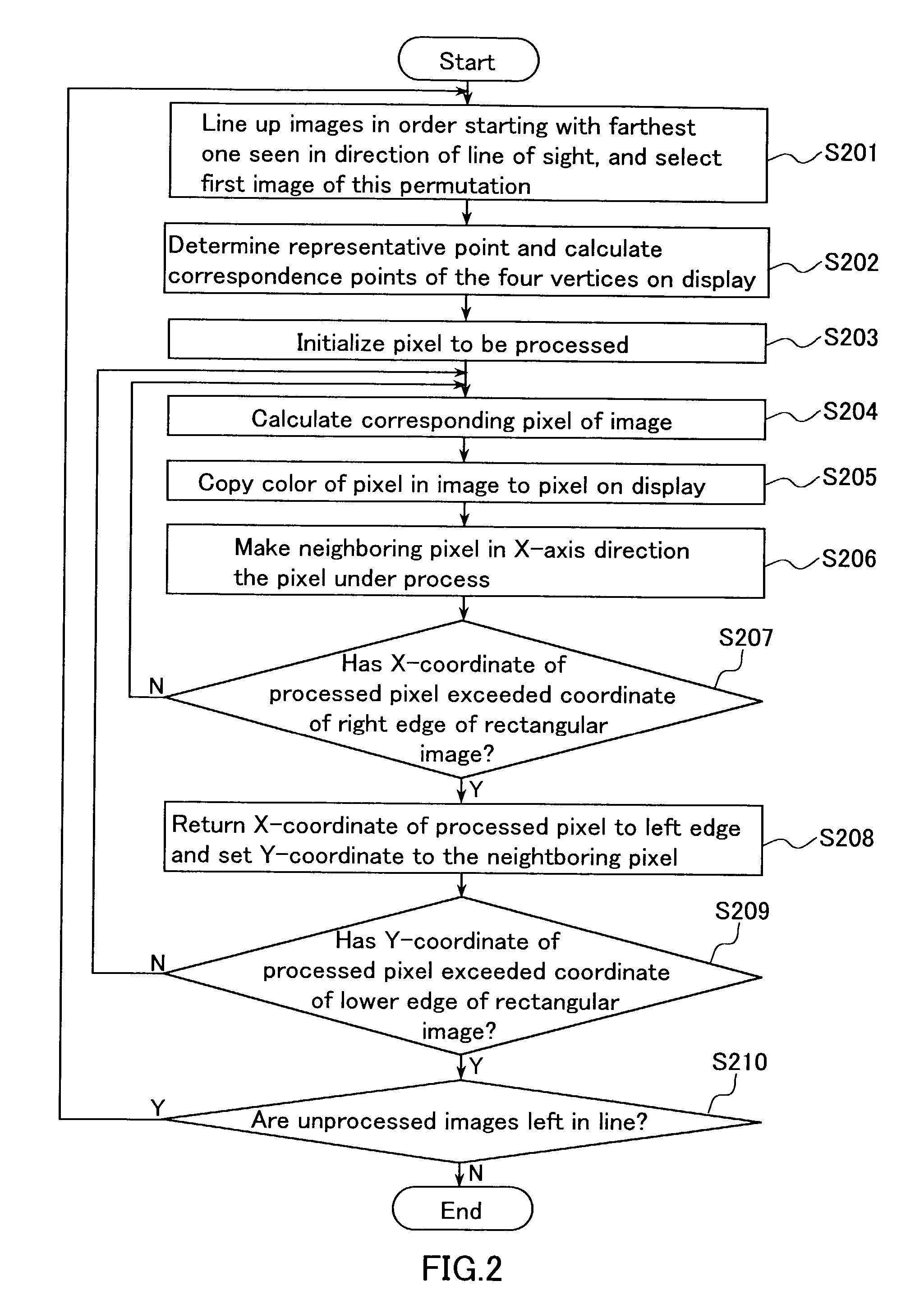Image display method and image display device
a display method and image technology, applied in the field of images displayed quickly, can solve the problems of difficult to judge how, difficult to see the details of an image, easy to judge the search scope, etc., and achieve the effect of shifting the amount of images between frames, easy to understand, and easy to understand
- Summary
- Abstract
- Description
- Claims
- Application Information
AI Technical Summary
Benefits of technology
Problems solved by technology
Method used
Image
Examples
embodiment 1
[0068]Embodiment is a 3D display processing acceleration technique optimized for the display of a large number of images, which is one of the basic techniques for the image display method of the present invention.
[0069]First, as one 3D display processing acceleration technique optimized for the display of a large number of images according to the present invention, an image creation process in accordance with a simplified 2D arrangement by parallel expansion projection is explained.
[0070]As explained in the prior art section, using a conventional central projection, a spatial viewpoint is taken as the projection center, and a display screen with a sense of realism can be attained that is close to the appearance when viewing the images arranged in the virtual 3D space.
[0071]However, as explained in the prior art section, this may lead to various problems, such as problems with the display processing speed. The present invention does not use a central projection, but uses a projection...
embodiment 2
[0125]Embodiment 2 is a technique for rendering 3D images that is optimized to the display of a large number of images, which is a second basic technique of the image display method according to the present invention. Image rendering techniques such as a multi-resolution image synthesis display process, a display process cutting out an essential region, a process for displaying a substitute for an omission, a process for limiting the range throughout which the viewpoint can be shifted, a process of highlighting a certain image, a process for displaying coordinate axes or the like, a process for displaying images with frames, and a process of spreading out the arrangement of images will be explained. It should be noted that these can be used in any suitable combination.
[0126]The first image rendering technique of the present invention is a technique for rendering 3D images using multi-resolution synthesized images.
[0127]In the process for arranging and displaying images in virtual 3D...
embodiment 3
[0179]The third basic technique is a 3D space rendering technique using a background image. This 3D space rendering technique using a background image is a technique showing, with a background image, a background object that serves as a guide for grasping the spatial position in the virtual 3D space in which the images are arranged.
[0180]When many images are arranged and displayed in the virtual 3D space, then there is the disadvantage that it is difficult to grasp the 3D space when there is no background, and the background is white or black. In order to solve this problem, a familiar scene, such as the own office or room is captured, and used as the background during display. With the familiar scene as the clue, the position of the images can be grasped, so that it becomes easier to understand what is located where. Thus, browsing searches and viewing can be performed as if everything is arranged around the table in one's own room. With regard to making things easy to remember, it...
PUM
 Login to View More
Login to View More Abstract
Description
Claims
Application Information
 Login to View More
Login to View More - R&D
- Intellectual Property
- Life Sciences
- Materials
- Tech Scout
- Unparalleled Data Quality
- Higher Quality Content
- 60% Fewer Hallucinations
Browse by: Latest US Patents, China's latest patents, Technical Efficacy Thesaurus, Application Domain, Technology Topic, Popular Technical Reports.
© 2025 PatSnap. All rights reserved.Legal|Privacy policy|Modern Slavery Act Transparency Statement|Sitemap|About US| Contact US: help@patsnap.com



